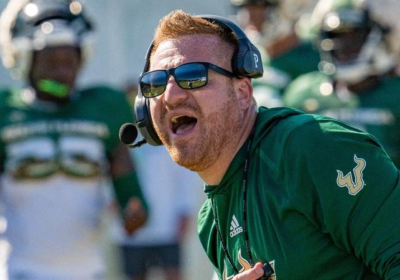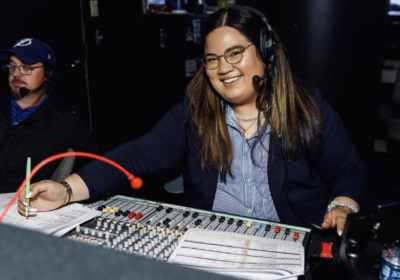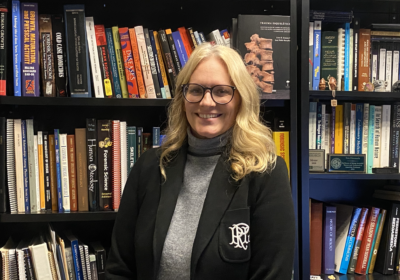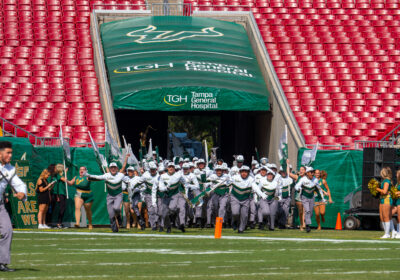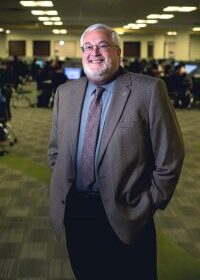Drumming up an interest
In a grassy field between the Natural & Environmental Science Building and the theater buildings, a group of students can be heard once per week playing bongos, drums and other percussion instruments.
They comprise the newly-formed Drum Circle at USF, a registered club that meets Mondays at 7 p.m. and held its first meeting Oct. 18. According to the club’s mission statement, it hopes to “promote unity, self-expression, creativity and musical communication” through “group drumming, a form of recreational music-making.”
Trista Brophy, a senior majoring in environmental science and the organization’s president, said the idea for the club came at the start of the semester when she would sit outside, improvising drum songs with her friends about their daily lives.
“Students walked by and started asking what we were doing, or just stayed around to hear the music,” Brophy said.
Nelly Njeru, a senior majoring in psychology, said she met Brophy in an ecology class and learned about the concept of drum circles through her.
“I have been playing drums since I was little – in family gatherings – but never played in a drum circle before,” Njeru said.
Njeru said she is originally from Nairobi, Kenya, but moved to the U.S. as a young girl.
“Playing the drums makes me feel closer to my culture,” she said.
The instruments used at the Drum Circle’s meetings belong to Brophy. She said people would give her instruments as presents, or she would order them online until she accrued a collection.
“My collection now stands at three acoustic guitars, an electric keyboard, a Baldwin upright piano, a harmonica, a tambourine, three djembe drums, a set of small bongos, a dulcimer, a wooden guira, a pair of egg shakers, a small steel drum and an afuche-cabasa,” she said.
Brophy said she has participated in other drum circles such as the Siesta Key Drum Circle. The sprawling drum event occurs every Sunday, around one hour before sunset on Siesta Key Beach – a beach on a barrier island of Sarasota – and attracts hundreds of people, including belly dancers.
“I played at the Siesta Key Drum Circle once a month or so for the past two years,” Brophy said. “It’s an amazing experience, and I am deeply moved every time I go.”
Yet, Siesta Key is about a 70-mile drive from USF, and she didn’t want to drive so far off campus to participate in a drumming group.
“What I like about drumming is that it is one of the most ancient and simple forms of music,” Brophy said. “Anything can be a drum.”
Brophy said she recognizes that drum circles are by nature spontaneous gatherings rather than formal organizations, but she believed the best way to create a campus presence was through the Center for Student Involvement.
“In order to be able to advertise on Note-A-Bull News, chalk on campus and enjoy certain privileges in general, it was better if we became an official student organization,” she said. “We knew we had to go through all the bureaucracy like writing a constitution, but it didn’t take too long.”
Jessica Schmidt, the Center of Student Involvement’s student supervisor and a senior majoring in communications, said student groups need to become official to take part in SG-funded privileges and services.
“We want them to stay true to their original purpose,” Schmidt said. “If the purpose of the drum circle is to gather and play music stress-free, we respect that. We don’t restrict or monitor meetings of any organization.”
Njeru said the club faced another obstacle when the mission statement it presented was too similar to the Association of Percussive Arts, which works with the USF Percussion Studio.
“We had to come up with another mission statement that made Drum Circle at USF stand out as something new,” Njeru said.
However, Brophy said at the club’s third official meeting, she thought it was ultimately a good idea to become an official student organization.
“This was the first time here for … two girls that are playing now,” she said. “The first thing they asked us was if we’re on Blackboard to add us as one of their organizations, and I was able to tell them, ‘Yes we are.'”

